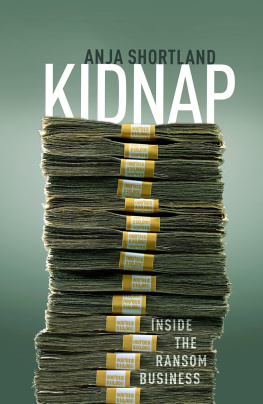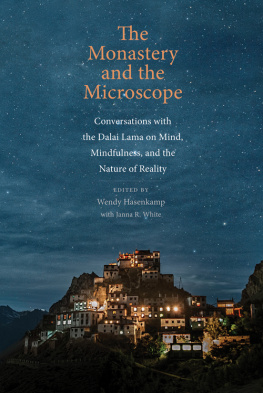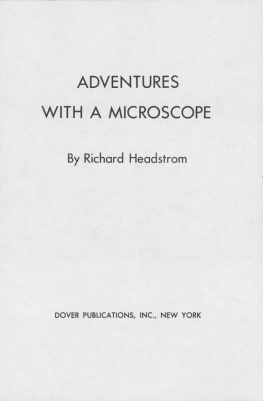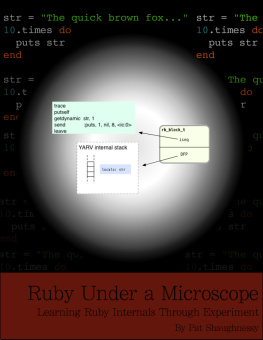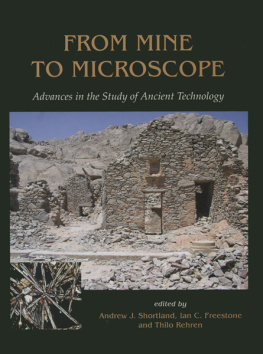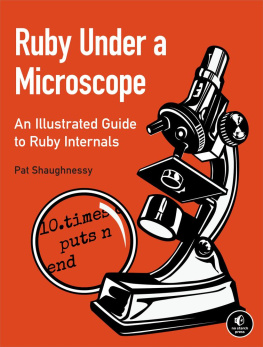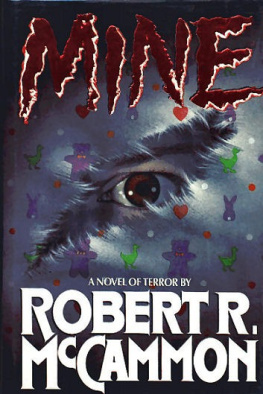Shortland Andrew J. - From Mine to Microscope
Here you can read online Shortland Andrew J. - From Mine to Microscope full text of the book (entire story) in english for free. Download pdf and epub, get meaning, cover and reviews about this ebook. year: 2009, publisher: Casemate Publishers & Book Distributors, LLC, genre: Home and family. Description of the work, (preface) as well as reviews are available. Best literature library LitArk.com created for fans of good reading and offers a wide selection of genres:
Romance novel
Science fiction
Adventure
Detective
Science
History
Home and family
Prose
Art
Politics
Computer
Non-fiction
Religion
Business
Children
Humor
Choose a favorite category and find really read worthwhile books. Enjoy immersion in the world of imagination, feel the emotions of the characters or learn something new for yourself, make an fascinating discovery.
- Book:From Mine to Microscope
- Author:
- Publisher:Casemate Publishers & Book Distributors, LLC
- Genre:
- Year:2009
- Rating:3 / 5
- Favourites:Add to favourites
- Your mark:
- 60
- 1
- 2
- 3
- 4
- 5
From Mine to Microscope: summary, description and annotation
We offer to read an annotation, description, summary or preface (depends on what the author of the book "From Mine to Microscope" wrote himself). If you haven't found the necessary information about the book — write in the comments, we will try to find it.
From Mine to Microscope — read online for free the complete book (whole text) full work
Below is the text of the book, divided by pages. System saving the place of the last page read, allows you to conveniently read the book "From Mine to Microscope" online for free, without having to search again every time where you left off. Put a bookmark, and you can go to the page where you finished reading at any time.
Font size:
Interval:
Bookmark:
Oxbow Books 2009
ISBN 978 1 84217 259 9
EPUB ISBN: 978 1 78297 277 8
PRC ISBN: 978 1 78297 278 5
Contents
J. Molera, T. Pradell, N. Salvad and M. Vendrell-Saz |
Y. Maniatis |
M. Maggetti |
R.B.J. Mason |
N. Wood |
J. Prez-Arantegui, J. Ortega and C. Escriche |
A.P. Middleton |
I. Kakoulli |
S. Paynter |
A.J. Shortland |
D.J. Barber, I.C. Freestone and K.M. Moulding |
J. Henderson |
M.S. Walton |
P. Northover and S. La Niece |
Th. Rehren |
Z.A. Stos |
A.M. Pollard |
N.H. Gale |
A.J. Hall and E. Photos-Jones |
P.T. Craddock and M.R. Cowell |
E. Photos-Jones, A.J. Hall, R. Jones and E. Pantos |
Introduction
Michael Tite came to archaeology through a formal education in the sciences, graduating from Oxford with a BSc in Physics in 1960. An interest in archaeology led him on to a DPhil supervised by Martin Aitken, at the Research Laboratory for Archaeology and the History of Art, which had been established some five years. His thesis awarded in 1965 was on the thermoluminescence dating of ceramics, but apparently not satisfied with a single PhD topic, he also worked with Martin Aitken on proton magnetometry and they published several papers on archaeomagnetic surveying at this time. He went on to undertake post-doctoral work at the University of Leeds as an ICI research fellow, and following this was appointed lecturer in the Physics Department of the University of Essex. He continued his work on electromagnetic prospecting and the magnetic susceptibility of soils and it was in this period that, with his PhD student, Yannis Maniatis, he developed his interest in the use of the scanning electron microscope to investigate early ceramic technology, an area in which he is still active. It was while he was in Essex that Mike produced his seminal book Methods of Physical Examination in Archaeology (Seminar Press, 1972). This book was the key textbook in the field for over a decade, and it is probably fair to say that no other single author has produced a textbook covering such a wide range of archaeological science dating, prospection and materials analysis.
Mikes abilities and grasp of the field, as evidenced by his book, made him a clear choice as Keeper of the British Museum Research Laboratory, a post he held from 1975 to 1989. It was during this period that his organisational flair came to the fore. He transformed a rather loose and dilettante group of individuals into what has been described as the worlds leading group in the study of ancient technology. His pragmatic approach to individuals strengths and weaknesses (to paraphrase: you cant change peoples characters, so make the most of them) allowed him to build extremely effective teams to address specific problems, resulting in numerous multi-authored publications. While many of these do not carry his name, he was involved in the direction of virtually every project and read and edited the vast majority, if not all, of the papers produced in this very fruitful period. He strengthened the Department of Scientific Research, as it became known, in many key areas such as statistics, mineralogy, neutron activation analysis and computing; indeed, the department under Mike was largely responsible for the launch of the British Museum into the world of information technology and on-line cataloguing. Mikes deft handling of the issues around an unacceptable error detected in a series of BM radiocarbon dates, and his coordination of the dating of the Shroud of Turin, are just two of his more public contributions from this period. During his time at the BM, London hosted a very successful Symposium for Archaeometry, and Mike joined the Standing Committee for the International Symposium for Archaeometry, serving as Chair from 1988 to 2004. The BM added the duties of Keeper of Conservation to his brief between 19815, but he found this brought more problems and less fun, and was able to divest himself of this after a relatively short period, finding the motivations of conservators a good deal more difficult to fathom than those of scientists.
In 1989, Mike Tite left the BM to become Edward Hall Professor of Archaeological Science at the Research Laboratory for Archaeology and the History of Art, Oxford, following in the footsteps of Martin Aitken, his DPhil supervisor. He took over as editor of the journal Archaeometry, and expanded it from a twice yearly cycle to quarterly publication. Mikes period at Oxford saw the development and expansion of the facilities and staff involved in materials analysis, AMS radiocarbon dating, the development of the OxCal calibration program, and the introduction of paleodietary studies and stable isotope analysis. For a time, RLAHA took responsibility for the Isotrace Laboratory, involved in the lead isotope analysis and provenancing of early metals. Many of these activities required a diplomatic touch: as will be clear from papers in the present volume, the spinoff from the great debates over the validity of the lead isotope approach continues, while it was necessary for the Lab to divest itself of its highly successful thermoluminesence authenticity service, due to concerns surrounding the ethics of authenticating material of unknown provenance. Meanwhile Mike continued his interest in early ceramics, and firmly established himself as the leading investigator in the field of early ceramic technology. He supervised a number of outstanding DPhil theses, and a number of his research students have gone on to become leading specialists themselves. His students recall his great ability to remember exactly what was said (and promised) meeting to meeting, which ensured that nothing was forgotten or a flaw in an argument ignored. Due to his long experience in ancient materials by the time he was at Oxford, Mike had also developed an almost supernatural ability to see solutions and ways forward, which his students learnt to trust and when tested almost always proved correct. Most of all, he is remembered as a supervisor who really cared for his students, their studies and their future careers. He remains an important mentor and friend to many of them.
During his distinguished career, Michael Tite has held four of the most important positions in archaeological science: Director of the labs at the BM and at Oxford, plus Editor of Archaeometry and Chair of the International Standing Committee. Thus not only has he led through the strength of his research and publications, but through his administrative and political activities. Those of us who have been privileged to work with him are only too aware that he saw his role as minimising the administrative burden on the rest of us, while undertaking as little admin as possible himself; his focus was always on getting as much science done as possible with the available resources.
As we write, Mike just completed an important book on Egyptian faience, and his output over recent years, evidenced in the accompanying list of publications, has shown no evidence of being diminished by his retirement in 2004. This volume represents a series of contributions by students, colleagues and friends in appreciation of the influence he has had on them, both as a researcher and as a friend. While these contributions cannot be compared with the best of Mikes output, in one way at least we hope they reflect his approach an overwhelming desire to get to the bottom of a problem.
Next pageFont size:
Interval:
Bookmark:
Similar books «From Mine to Microscope»
Look at similar books to From Mine to Microscope. We have selected literature similar in name and meaning in the hope of providing readers with more options to find new, interesting, not yet read works.
Discussion, reviews of the book From Mine to Microscope and just readers' own opinions. Leave your comments, write what you think about the work, its meaning or the main characters. Specify what exactly you liked and what you didn't like, and why you think so.




